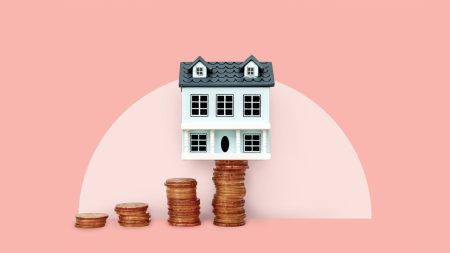Key takeaways
- You’re more likely to secure a personal loan despite a low income if you apply for a smaller loan amount, apply with a cosigner or work with an online lender.
- Check your budget and ensure you can afford your monthly payment because defaulting can damage your credit score.
- If you don’t qualify for a personal loan, alternatives include secured loans and credit cards.
If you have a low income and face an unexpected expense, a personal loan may seem completely out of the question. Most lenders require applicants to have a stable income, and some even set a minimum income requirement. But there may still be ways you can qualify.
Before applying, ensure the monthly payment won’t stretch your budget too thin. Consider the interest rate, repayment term and applicable fees when calculating your total monthly payment. Falling behind on your payments will leave you with credit score damage and growing debt.
Low-income personal loan lenders
It’s possible to qualify for a personal loan with a low income. These five lenders feature personal loans with low minimum income requirements:
| Lender | APR range | Loan amounts | Annual income requirement | Minimum credit score |
| Happy Money | 8.95%-29.99% | $5,000–$40,000 | None | 640 |
| Prosper | 8.99%-35.99% | $2,000–$50,000 | Greater than $0 | 600 |
| Universal Credit | 11.69%-35.99% | $1,000-$50,000 | None | 580 |
| Upgrade | 7.99%-35.99% | $1,000–$50,000 | None | 580 |
| Upstart | 6.60%-35.99% | $1,000–$50,000 | $12,000 | No requirement |
-
Happy Money offers one loan — the Payoff loan. It’s designed to consolidate high-interest credit card debt. The starting APR is much lower than the average credit card rate, which is above 20 percent. Happy Money has no minimum income requirement, though you’ll need enough regular income to cover your monthly payment. This lender also offers online money management tools and financial education resources to help you take control of your finances.
-
Prosper is a peer-to-peer lender, meaning that loans are funded by individual investors rather than a direct lender. You may qualify with any income over $0, as long as it supports the payments. Prosper also supports co-borrowers, making it easier to qualify.
-
Universal Credit has no income requirement and a lower minimum credit score than competitors at 580, but its APRs are higher, too. They stand out for offering small loan amounts, starting as low as $1,000. However, Universal Credit only offers two repayment term options: three or five years.
-
Like some of the other lenders on this list, Upgrade doesn’t have a minimum income requirement, though you must earn enough to support the repayment of a new loan. If you’re borrowing to consolidate debt, Upgrade also offers direct payments to creditors (with a small rate discount). And if you don’t qualify for an Upgrade loan, you can apply with a co-borrower or secure your loan with a vehicle to improve your eligibility.
-
Upstart has a low annual minimum income requirement of just $12,000. This lender also works with borrowers across the credit spectrum. If you have great credit, you may qualify for one of the lowest rates on the market. If you’ve had some credit challenges, you may qualify for a loan with a score as low as 300 — or even if you don’t have enough credit history to generate a score. However, rates can be high for less-qualified borrowers, and this lender charges the largest origination fee we’ve found: up to 12 percent.
Bankrate insight
If a lender doesn’t disclose its annual income requirements, ask whether it offers prequalification. When you prequalify for a personal loan, the lender performs a soft credit check to determine whether you qualify and allows you to preview potential rates.
How to get a low-income loan
Lenders want reassurance that you earn enough income to make timely loan payments. While not all lenders have a minimum income requirement, they all have other approval criteria you must meet to get a personal loan. For example, you may need to provide proof of income or show you have no recent defaults or bankruptcies.
Other minimum requirements to consider
Before applying, compare approval requirements between multiple lenders. Then, use a personal loan calculator to understand how each loan offer would fit into your budget. Only apply to lenders whose minimum requirements you meet.
- Credit score: Perfect credit isn’t required to qualify for a loan. However, low personal loan rates are typically reserved for borrowers with good or excellent credit. Expect higher interest rates and fees if you have a lower credit score. The average personal loan rate is currently above 12 percent, but bad-credit borrowers may receive a rate as high as 36 percent.
- Income: Not every lender has a specific income requirement, but all will require proof of income. They may ask you to provide recent pay stubs, W-2s or tax returns, along with your employer’s contact information. If you’re not a W-2 employee but earn income from self-employment, side hustles, child support, alimony or government benefits, list these on your loan application.
- Debt-to-income (DTI) ratio: Your DTI is calculated by dividing the sum of your monthly debt payments by your total monthly gross income. The lower your DTI, the more room you have in your budget for an additional debt payment. Lenders prefer DTIs at or below 36 percent, though some lenders will accept DTIs up to 50 percent.
- Proof of residence: The lender may request a copy of a mortgage statement, lease agreement or a utility bill that includes the name and physical address listed on the loan application.
Bankrate’s take:
If you don’t meet the eligibility criteria and don’t need immediate funding, consider working with a credit counselor or creating a debt management plan to help you pay down existing debt and improve your credit.
“If you have very little income, you really need to think about why you’re taking out a personal loan,” says Denny Ceizyk, senior writer with Bankrate and former mortgage loan originator. “You’ll be committing to a regular monthly payment for one to seven years. That could be jarring to your budget if you’re used to making minimum payments on credit cards when money is tight.”
If you decide that you can manage a personal loan’s monthly payments, you can strengthen your approval odds by asking a creditworthy friend or relative to cosign the loan. Keep in mind that cosigning puts the cosigner on the hook for payments if you fail to make them, so be sure you can reasonably afford the payments before going this route. Not all lenders allow cosigners for personal loans, so include this option in your search criteria when comparing lenders.
Compare lenders to find the best option
While it may not feel like it, there are a variety of lenders who work with borrowers with low incomes. It’s important that you compare at least three different lenders before selecting one so that you know you are choosing the best option available.
“Not all low-income loan options are created equal. Look beyond income requirements — pay close attention to the APR range, fees and repayment flexibility. These will have the biggest impact on your cost of borrowing,” says Jane Nam, Bankrate writer.
Alternatives to a personal loan when you have low income
If you’re unable to qualify for a personal loan or would simply prefer to explore other funding sources, consider the following options.
Credit cards
If you have good or excellent credit, consider a credit card with an interest-free introductory period. Paying off the entire balance before the promotional period ends means you won’t pay any interest on charges you incur. If you carry a balance from month to month, however, this form of financing could be costly. Interest will accrue, and your balance can grow quickly.
“Good to excellent credit might get you approved, but lower income often means a smaller credit limit. Usually, these 0 APR offers last anywhere from 12 to 21 or more months, which gives you time to pay off the balance from a large expense or debt consolidation,” says Seychelle Thomas, Bankrate writer and Certified Financial Education Instructor.
“Before choosing this form of financing, it’s important to have a plan to pay it off before the introductory period ends and the regular APR kicks in. Otherwise, any remaining balance will start accruing interest — and usually at a higher rate than a personal loan,” Thomas advises.
Secured loans
You’ll have to put up collateral to get a secured loan, commonly a vehicle or savings account balance. However, they’re attractive to many borrowers because you can get approved with a lower credit score and minimal income, and you may receive a substantially lower rate than you’d get on unsecured debt. The downside is that you could lose your asset if you default on the loan.
Credit union loan
Some federal credit unions offer small-dollar emergency loans to their members. These low-income loans are often referred to as payday alternative loans. These loans can be up to $2,000 with a maximum APR of 28 percent — that’s significantly more affordable than the 400 percent APR that you’ll find with payday loans. However, you must be a credit union member to borrow this type of loan, and not all credit unions offer them.
Pawnshop loan
Pawnshop loans are available to low-income borrowers. You’ll have to pawn an item worth more than what you want to borrow — you may only receive 25 percent to 60 percent of the item’s value in cash. They’ll keep your item until you repay the loan plus fees in full, typically within 30 to 60 days. If you fail to repay the debt, the pawnshop will sell your item to recoup its losses. Pawnshop fees often translate to APRs in the triple digits, so this is a last-resort option.
Payday loans
Although they’re easy to access if you have a low income and imperfect credit, payday loans should only be used as a last resort for a few reasons. For starters, the interest rates are often well into three digits. Some go as high as 650 percent, far higher than even pawnshop loans charge. And as the name suggests, the balance is generally due by your next payday, commonly within two weeks. It’s dangerously easy to get into a cycle of ballooning debt with payday loans.
Bottom line
Taking out a personal loan is sometimes necessary, but having a low income can make it challenging to manage. The upside is that some lenders offer flexible, affordable loan products with competitive rates for those with a lower income.
Before you apply, make sure you can afford the monthly payments. Explore well-regulated options like personal loans and credit cards before turning to riskier, higher-interest alternatives.
Why we ask for feedback
Your feedback helps us improve our content and services. It takes less than a minute to
complete.
Your responses are anonymous and will only be used for improving our website.
Help us improve our content
Read the full article here









